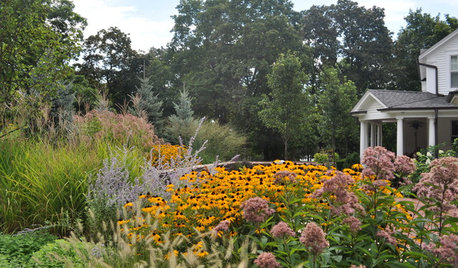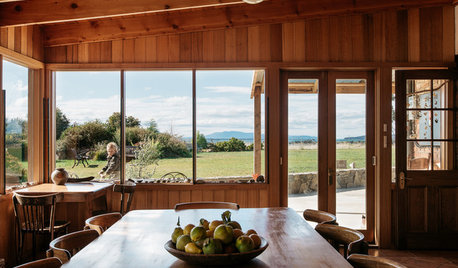New lawn disaster, looking to Overseed
humdogj
10 years ago
Related Stories

BEFORE AND AFTERSSee 6 Yards Transformed by Losing Their Lawns
Wondering whether a turf lawn is the best use of your outdoor space? These homeowners did, and they found creative alternatives
Full Story
LANDSCAPE DESIGNGet Along With Less Lawn — Ideas to Save Water and Effort
Ditch the mower and lower your water bill while creating a feast for the eyes with diverse plantings and gathering places
Full Story
GREAT HOME PROJECTSHow to Replace Your Lawn With a Garden
New project for a new year: Lose the turfgrass for energy savings, wildlife friendliness and lower maintenance
Full Story
GARDENING GUIDESPacific Northwest Gardener: What to Do in September
Put in cool-weather veggies, fertilize your lawn and tidy the garden this month before chilly weather arrives
Full Story
SAVING WATERXeriscape Gardens: How to Get a Beautiful Landscape With Less Water
Conserve water and make gardening much easier with the xeriscape approach’s 7 principles
Full Story
HOMES AROUND THE WORLDThe Great Escape: Family Rebuilds After a Devastating Wildfire
Tim and Tammy Holmes survived the 2013 Tasmanian bushfires but lost their home. See how they’ve started over
Full Story
MOST POPULAR9 Real Ways You Can Help After a House Fire
Suggestions from someone who lost her home to fire — and experienced the staggering generosity of community
Full Story
LIFEHow to Prepare for and Live With a Power Outage
When electricity loss puts food, water and heat in jeopardy, don't be in the dark about how to stay as safe and comfortable as possible
Full Story
HOMES AROUND THE WORLDAfter the Quakes: New Christchurch Houses 5 Years Later
These New Zealand architects and homeowners have overcome the obstacles and created strong, stylish new homes
Full Story
GARDENING GUIDESWhat Are Your Spring Gardening Plans?
Tearing out the lawn? Planting edibles? Starting from scratch? Tell us what you plan to change in your garden this year
Full StorySponsored
Columbus Area's Luxury Design Build Firm | 17x Best of Houzz Winner!
More Discussions









grass1950
humdogjOriginal Author
Related Professionals
Deer Park Landscape Architects & Landscape Designers · La Marque Landscape Architects & Landscape Designers · Tomball Landscape Architects & Landscape Designers · Towson Landscape Architects & Landscape Designers · Boca Raton Landscape Contractors · Braintree Landscape Contractors · Cambridge Landscape Contractors · Columbine Landscape Contractors · Fort Payne Landscape Contractors · Hampton Bays Landscape Contractors · Oviedo Landscape Contractors · Paramount Landscape Contractors · Wells Landscape Contractors · Charleston Swimming Pool Builders · Rockwall Swimming Pool Buildersmaplerbirch
grass1950
humdogjOriginal Author
humdogjOriginal Author
grass1950
humdogjOriginal Author
grass1950
dchall_san_antonio